If you are thinking about how to revive outdated furniture, self-adhesive film will be one of the best options. It is easy to work with it and even a beginner can paste over furniture with it. In addition, this method will surprise you with its economy and stylish look. Today, there is a huge amount of various self-adhesive films for furniture, windows, doors, glass, window sills and even architraves. If you wish, you can paste over almost everything - of course, if you do not consider it too much. In the article, we will take a closer look at how to glue furniture with a self-adhesive film, talk about the existing types of materials and how to choose them correctly.
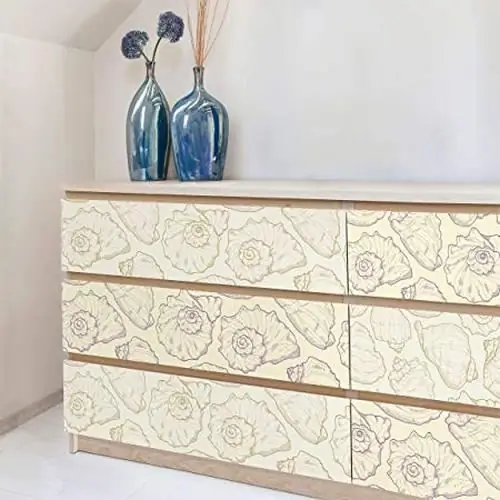
How to choose material?
In order to choose the right material that is suitable for solving your problems, you need to decide on the composition, structure, design and direct purpose. You may need a white self-adhesive film. There are plenty of other options as well. For example, it can be a film under a tree. How not to get confused in the assortment and choose the most suitable option? To do this, you should understand all the existing types of materials.
Types by composition
The composition of the film depends on which polymer component was involved in its production. It is the polymers that give the film its inherent elasticity. In addition to them, the composition of the material includes various pigments and additives. Based on the composition, three types of film can be identified: polyvinyl chloride (PVC), polyester and propylene.
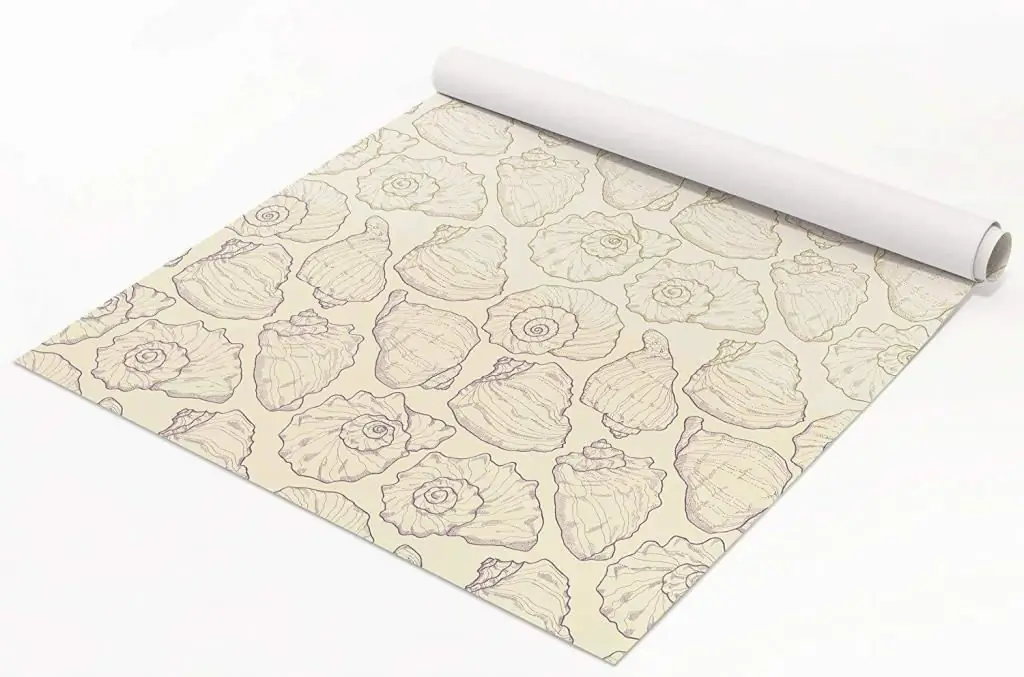
Surface views
The surface of the material plays an important role in pasting furniture of various styles and decorating the room. It can be divided into several types:
- Glossy. This film is mainly used in rooms where daylight does not penetrate, or in rooms with windows facing north.
- Matte film is preferred when decorating spacious and bright rooms.
- Transparent is taken for pasting glass surfaces as a means of protection against mechanical damage.
- Holographic will be appropriate in any room, as it refracts light. Depending on the angle of illumination, its shade may vary. The volume of the glued piece of furniture also changes visually.
- Mirror film is better to use if the room is small. Thus, you can visually enlarge it. You can paste over the door and closet. By correctly combining structures and colors, it is quite possible to achieve a very harmonious and stylish solution.
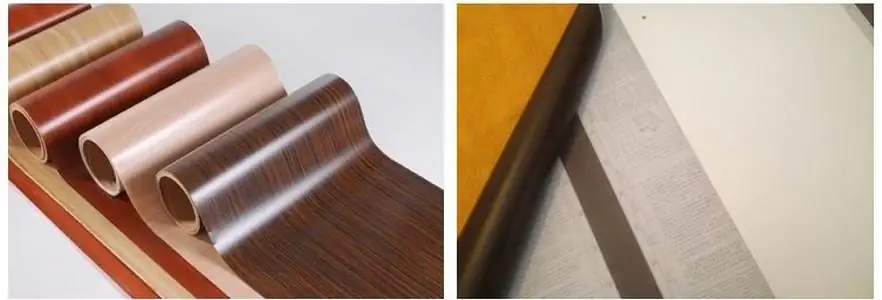
Structure
There are one- and two-layer self-adhesive films. What are their features? Single-layer ones are made by combining different chemical components. These are mainly polymers, stabilizers, resins and pigments.
Two-layer films consist of a bottom layer made of fabric or paper, and a top layer made of the aforementioned polymers and additives. These materials are made in different ways. In order to stick the film, you need to detach it from the base.
Types of design material
There are a huge number of options. Self-adhesive decorative film can have absolutely any type, color, pattern. In stores you can find a film for gold or precious stones, for natural stone, tapestry, leather, fabric of various textures, cork, wood of different species. The pattern is also diverse - from folk tales to images of wild nature landscapes or frames of your favorite movie.
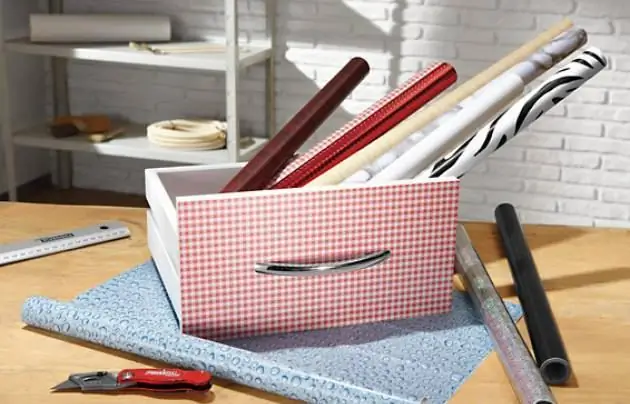
If you are interested in how to stick a self-adhesive film on a wooden surface, it is important to familiarize yourself with some of the features of this furniture decoration option. We will consider the pasting process further.
Pros of self-adhesive film
Among the main advantages, we highlight the following:
- Heat resistance. The film can withstand temperatures up to 80 degrees.
- Resistance to mechanical damage: the denserfilm, the more difficult it is to scratch.
- Moisture resistance. Thanks to this, the film can be glued in any corner of the apartment, including the toilet and bathroom.
- Low price. In stores you can find options for any budget. For a small price, you can significantly refresh the look of old furniture without buying a new one.
- Great choice: from a cartoon for a children's room to a cote d'Azur for a bathroom. There are also materials with various patterns and decorations. Everyone will find the most suitable option for themselves.
- Practicality and versatility. It is very easy to stick self-adhesive film on chipboard, metal, plastic and glass - and you can do it yourself (below we will look at the instructions for applying the material to the surface).
- Fast pasting process. This work is done in a short period of time without unnecessary dust and dirt, long cleaning and other difficulties. If necessary, the material can be easily removed (we will also consider this point later).
- Durability. Due to its strength and durability, the film is able to last for years.
- Easy maintenance. Due to the moisture resistance, the material is very easy to clean.
How to paste over furniture with a self-adhesive film? Preparing
Before gluing the film, it is necessary to prepare the surface. Make sure the furniture is not cracked or rough. If a few irregularities are nevertheless found, they must be eliminated, otherwise the self-adhesive will repeat all the scratches and humps and focus on them. To do this, sand the surface and carefully go over the small parts with putty.cracks.
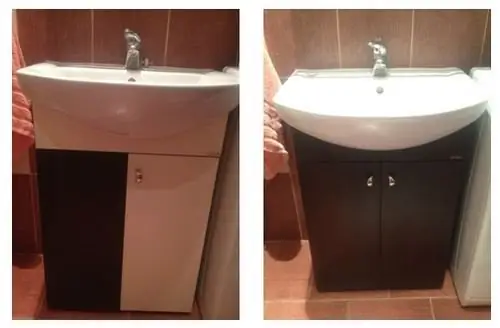
Be sure to remove all fittings - you will screw them back after finishing work. Decor elements or glass will also have to be temporarily removed.
Clean the surface by wiping with a damp cloth. After that, degrease it with any available means. Prepare acrylic varnish: they need to carefully cover the surface. Before purchasing a film, measure the elements that need to be pasted over. This will be needed in order to determine what width of roll you need. The task is to glue furniture with high quality, preferably without joints (if possible). When you buy self-adhesive, pay attention to the marking grid on the back. It will help you quickly and correctly cut the details. Cut out all the necessary pieces and get started.
Pasting process
How to glue furniture with self-adhesive film? The main thing is not to rush. Haste can spoil a meticulous process, but in any case, it is important to remember that a mistake is easy to fix. So feel free to get to work. If a decorative self-adhesive film is intended for pasting some small part (for example, a cabinet door), the material can be glued without wetting the base with water. If the area is larger, it is better to treat the base with a liquid soap solution. In this case, the film will not seize immediately, and you can easily correct the distortions. This is especially important if you have little pasting experience yet.
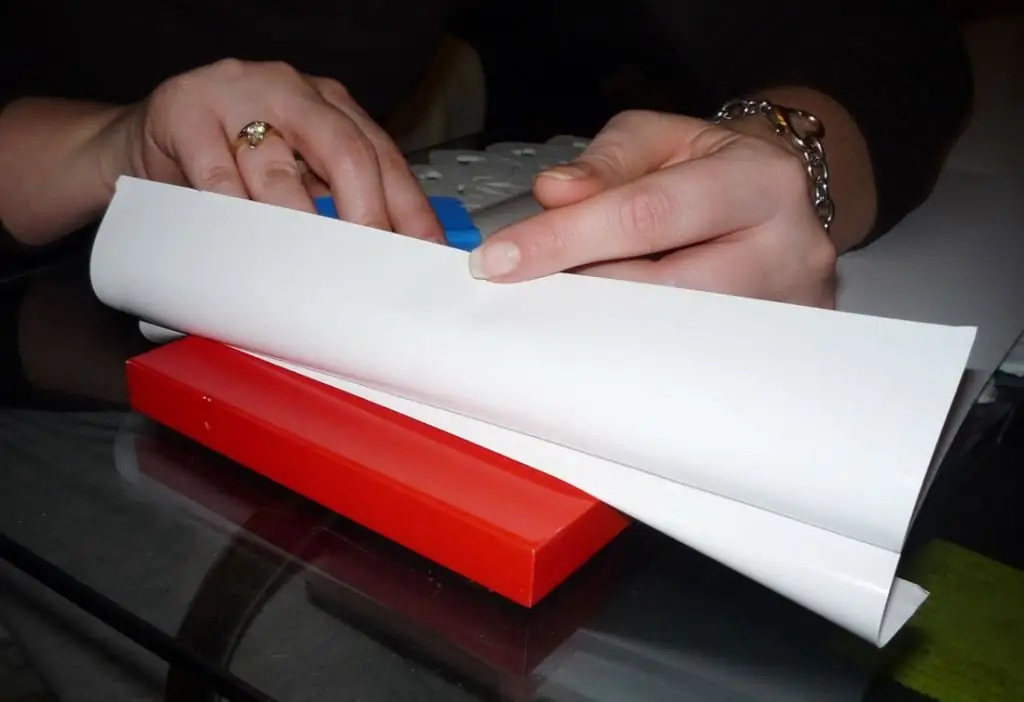
It's best to start applyingfilm from top to bottom. For convenience, the cabinet doors can be temporarily removed. Carefully separate the film from the bottom layer by 10-12 centimeters and attach it to the top of the part. Make sure that the fabric lays evenly, press it to the surface and smooth out from the center to the sides (use a damp cloth).
In this way, continue to move from top to bottom, slowly smoothing out new sections of the film with a rag and gradually separating more and more from the base. Try not to allow bubbles to form. After the element is pasted over, inspect it for distortions and bubbles. If there is a bias, separate the required amount of film, coat with soapy water and glue again. If a bubble appears, gently pierce it with a needle, release the air and gently press the material to the surface.
How to glue furniture with self-adhesive film? It happens that when smoothing it, wrinkles form. In order not to peel off the entire canvas, heat the wrinkle area with a hairdryer and smooth it again. After pasting, wait for the film to dry completely. When you are sure that the work is done with high quality, you can screw the fittings and return the decorative elements to their place.
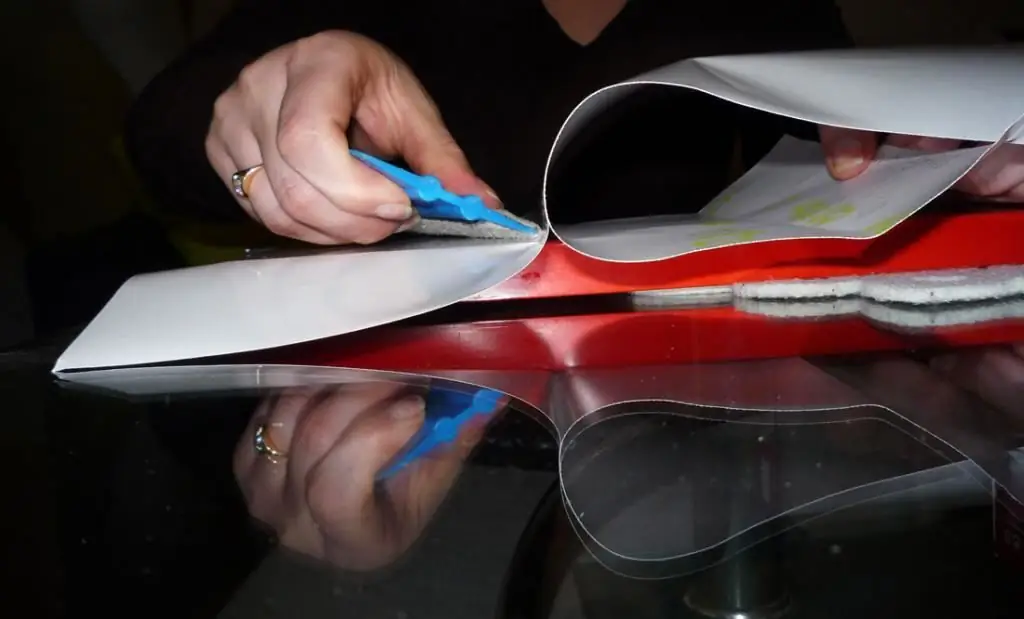
If material needs to be removed
How to paste over old furniture with self-adhesive film, we already know. But if the film is already too many years old or you just want to refresh the interior, it can be dismantled. To remove an old or boring film, you need to heat up the adhesive composition on which it rests. In this case, separate it fromsurface will be easy.
For this job you will need a hair dryer. If you are removing material from a small area, use a regular hair dryer, but if the area of \u200b\u200bthe sticker is much larger, you will need an industrial version. Turn on the hair dryer, direct a jet of hot air at the film and begin to gently pull it. Do not rush - it is important not to tear the material here. After removing the film, glue may remain on the surface. Remove it with a solvent, but before doing so, make sure that it does not damage the surface. Try it out first by applying a little substance to an inconspicuous place. If there is no negative reaction, feel free to remove the remaining glue.
Caring for self-adhesive film
There is nothing difficult in caring for her. To clean it, just wipe the surface with a damp cloth. If you need to remove greasy stains, use a regular dish detergent. It is better not to take powder products, as they can scratch the surface, and over time the film will fade and look unpresentable. Also, do not use solvents such as white spirit, as this may damage the material. It is better to use ordinary alcohol, moistening a cotton pad with it.
Conclusion
After all the above information, the question of how to glue furniture with self-adhesive film should not scare you. Doing this is quite simple with your own hands, even without helpers. A little patience and time is enough - and very soon your apartment will sparkle with new colors, and old furniture will please with an updated look.






